In addition to identification, isolation & treatment of COVID-19 infected persons, research has an important role to play in planning & strategizing government’s response to the pandemic. Here is a summary of some important research studies published by the Indian Journal of Medical Research.
The COVID-19 epidemic is caused by a new strain of Coronavirus which was not detected earlier in Human beings. Coronavirus are a large group of viruses which cause illness ranging from common cold to more severe diseases. A novel strain of Coronavirus was identified to be the cause of pneumonia cases detected in Wuhan, China. This Coronavirus was temporarily named as ‘2019-nCov’. The disease is now referred to as COVID-19 (Corona Virus Disease -2019).
The initial research suggests that it has zoonotic origins i.e originating from animals, and could be a bat-borne virus. Since it is a new type of virus, there is a lot of research being carried out across the world to understand the nature of the virus, origins of its transmission to humans, the structure of it, possible cure/vaccine to treat COVID-19 etc. India is also part of these research efforts.
In this story, we take a look at few of the interesting and important research being carried out in India with respect to COVID-19. We have referred to the research articles published on ICMR (Indian Council of Medical Research)’s Indian Journal of Medical Research.
SARI patients with no record of international travel or contact with infected persons tested positive for COVID-19
The resources required to test India’s huge population for possible cases of COVID-19 is immense since the availability of the resources like testing kits, labs, personnel etc. is limited. Hence it is important to optimize testing by developing strategies to identify potential cases who have a higher chance of being infected.
As per the research article titled, ‘Severe acute respiratory surveillance for coronavirus disease 2019, India,2020’, the objective of the research was based on the pretext that surveillance of Severe Acute Respiratory Illness (SARI) patients can help in identifying the spread and the transmission of the COVID-19.
SARI patients who were admitted across 41 sentinel sites were tested for COVID-19. As per the analysis of the data extracted from ‘Virus Research and Diagnostic Laboratory Network’ (VRDL),
- 104 out of 5,911 SARI patients were tested positive for COVID-19 i.e. 1.8%
- These cases were from 52 districts across 20 states/UTs.

- 40 of the COVID-19 positive patients i.e 39.2% did not report history of contact with a known case or history of international travel. Such cases were found in 36 districts across 15 states.
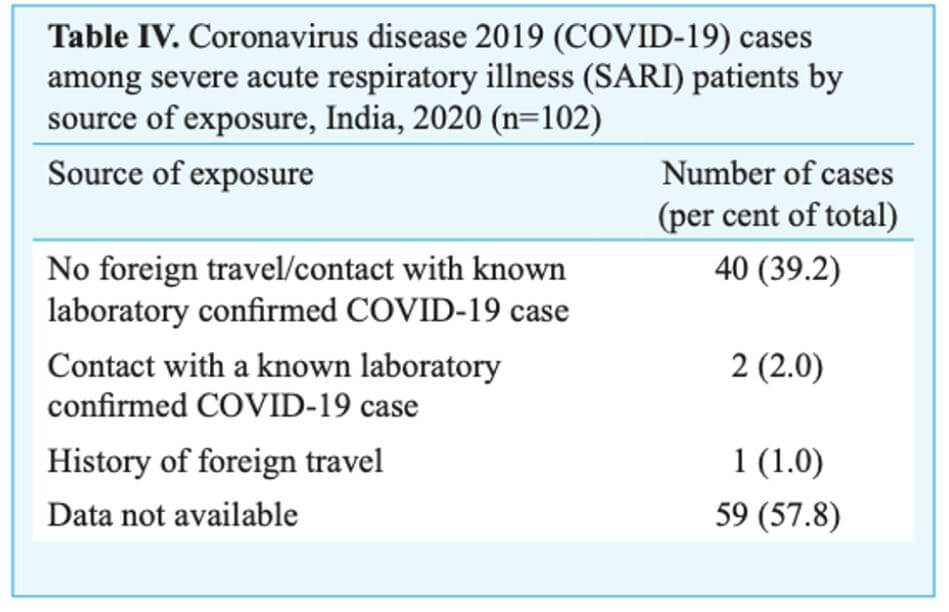
- COVID-19 positivity is higher among males and patients who are aged above 50 years.
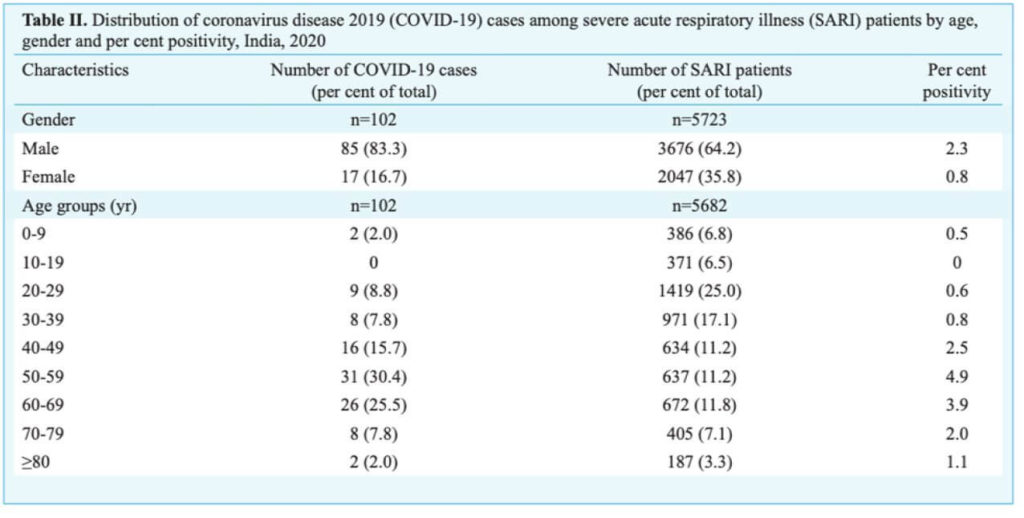
Another article on IJMR, recommends active surveillance of symptomatic patients in view of the challenges involved in testing the huge population of India.

24-hour working model for testing can increase the testing capacity
Aggressive testing to understand the spread of infection is suggested as one of the more effective ways of containing the spread of the virus. Some of the countries at the forefront of tackling COVID-19 have been conducting a higher number of tests. This research is important in the context of India, which is still not testing at the level of other countries. It helps devise an optimal testing strategy to effectively identify the spread of the virus.
A study was conducted to explore the interventions needed to increase the daily testing capacity for COVID-19 in India. For this, a potential increase in daily testing capacity in the existing public laboratories was calculated in three different shifts – 9 hrs., 16 hrs. & 24 hrs.
Interventions which were identified for increasing the capacity included – Procurement of additional qRT-PCR machines, leveraging the capacity of the current available machines, optimizing the in-laboratory processes etc.
The study projected the following based on available infrastructure:
- the number of tests conducted daily can be increased to 40,464 by opting for 24 hr. shifts compared to that of 9hr and 16 hr. shifts which allowed for around 12 thousand and 28 thousand tests respectively.
- This can be further enhanced by using qRT-PCR and NAAT based machines available with MRUs, NACO and NTEP.
- Using combination/multiplex kits and providing automated RNA extraction platforms can help to increase capacity by 1.5 to 2 times.
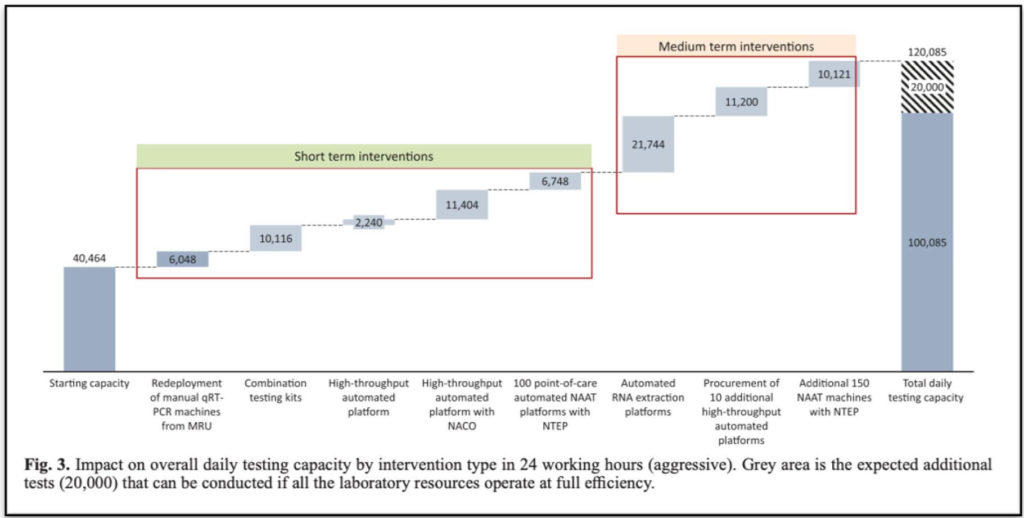
However, to increase the testing capacity there is also a need to increase the procurement of the various commodities like testing kits, swabs, extraction kits etc. The study has also projected the volume of these commodities that India needs to procure over the next few months.
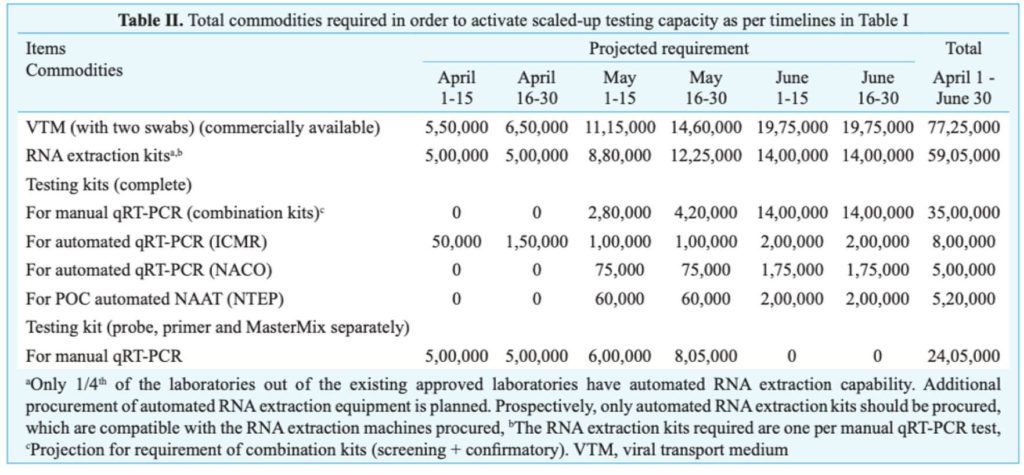

Distinct clusters of Coronaviruses found in few species of Bats found in India
Few pieces of research suggest that the strain of Coronavirus which has caused COVID-19 is transmitted to humans through bats. There have been earlier instances of virus transmission through bats.
A research study was conducted to assess the presence of Coronaviruses (CoVs) in the bats that are found in India. The identification of bat CoV was carried on two bat species – Pteropus .medius & Rousettus, found in few Indian states. The bat samples were screened from seven states. For this:
- The rectal & throat swabs (RS & TS) collected from the specimen were screened using RT-PCR (Reverse transcription Polymerase Chain reaction), which targeted the RNA dependent RNA polymerase (RdRp) gene.
- Further, a single-step RT-PCR was conducted on the RNA extracted
- Next-Generation Sequencing was performed on the specimens that were tested positive, which was followed by Phylogenetic analysis.
In the Rousettus species of Bats, 4 out of 78 RS were found to be positive, all of which belong to the state of Kerala. The intestinal specimen of two bats was found positive. While all the TS reported negative for any of the Corona Viruses.
Even in the case of Pteropus. species of Bats, all the Throat Swabs (TS) tested negative whereas 21 of the 508 RS were found to be positive. Next-Generation Sequencing and further analysis showed that the CoVs retrieved from these bats form a distinct cluster to that of the CoVs which are known to cause human infection.
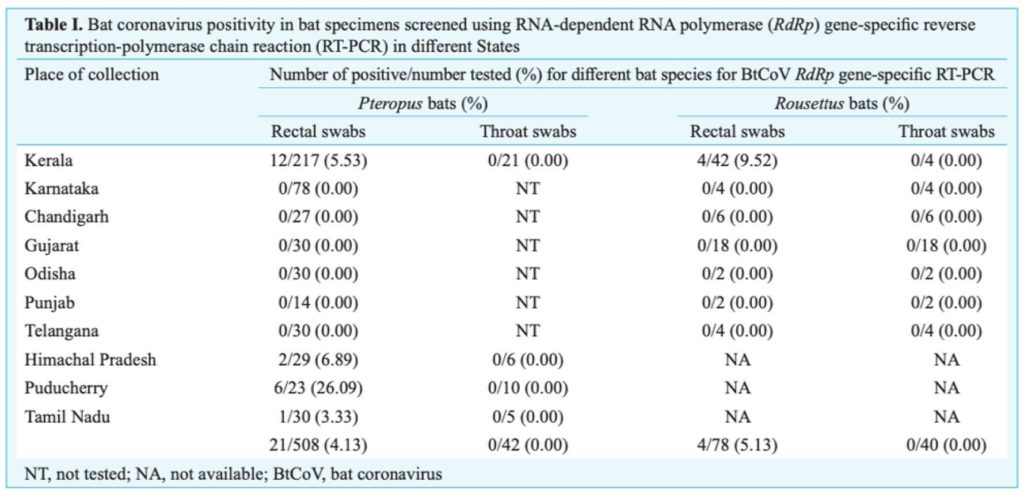

Mathematical models indicate the need for Public Health interventions to contain the spread of COVID-19 epidemic.
The rapid spread of COVID-19 across the world has created an unprecedented situation. With a vaccine yet to be developed and no conclusive clarity on the treatment methods, the only approach being suggested is to contain the spread.
A research study has highlighted the impact of proactive intervention in mitigating the spread of the virus through human-human transmission. The main objective of the study was to identify the possibility to prevent or delay the local outbreaks of COVID-19 through quarantining and other containment methods.
Mathematical models of infectious disease transmission were used for the study. An optimistic and pessimistic scenario were projected based on the data available.
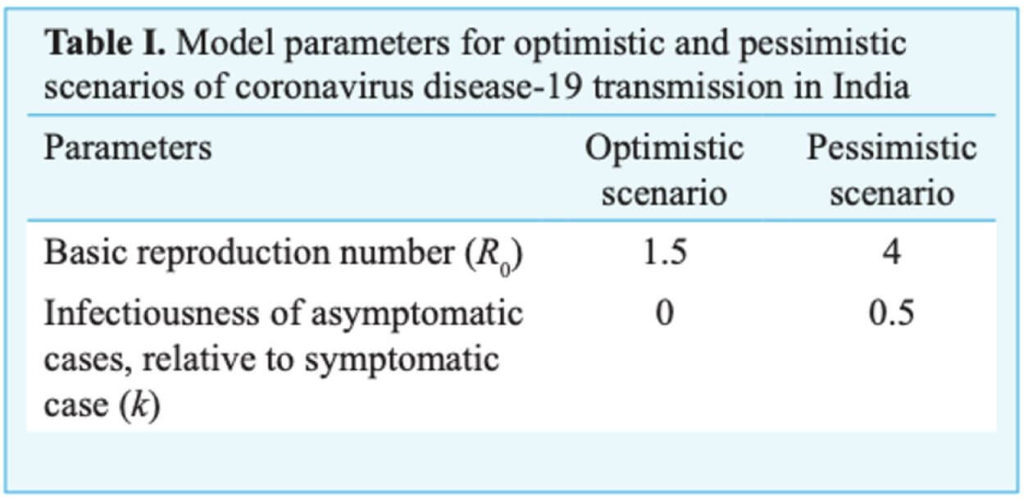
- In one of the key scenarios, it is assumed that if 50% of the symptomatic individuals were identified and quarantined within three days of developing symptoms, it can result in a cumulative reduction of the incidence by 62%.
- Whereas in a pessimistic scenario, where the reproduction number is 4 and there is a chance of asymptomatic infections being as infectious as symptomatic, the impact of reduction may fall to only two per cent.
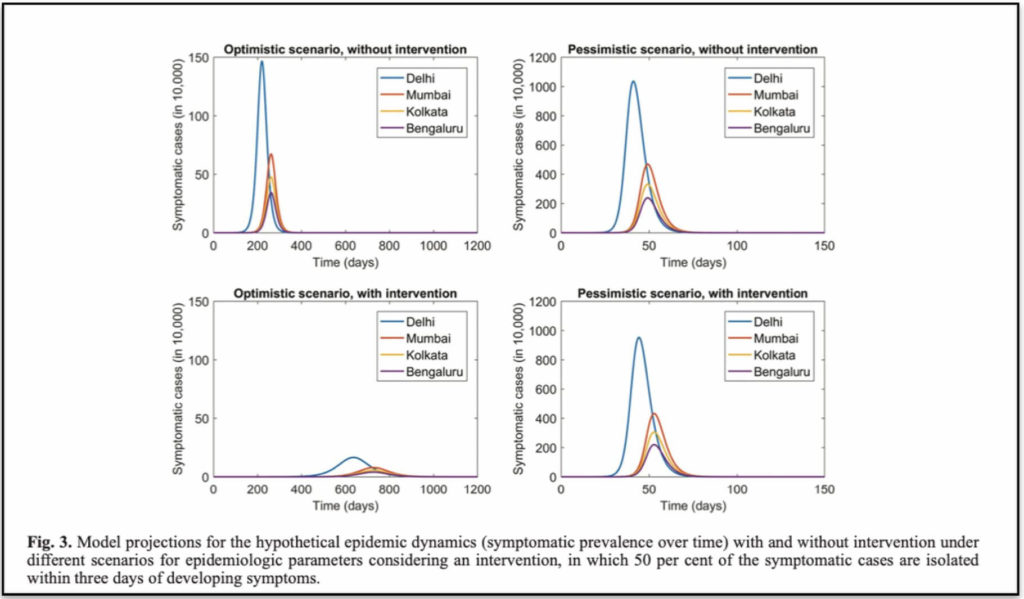
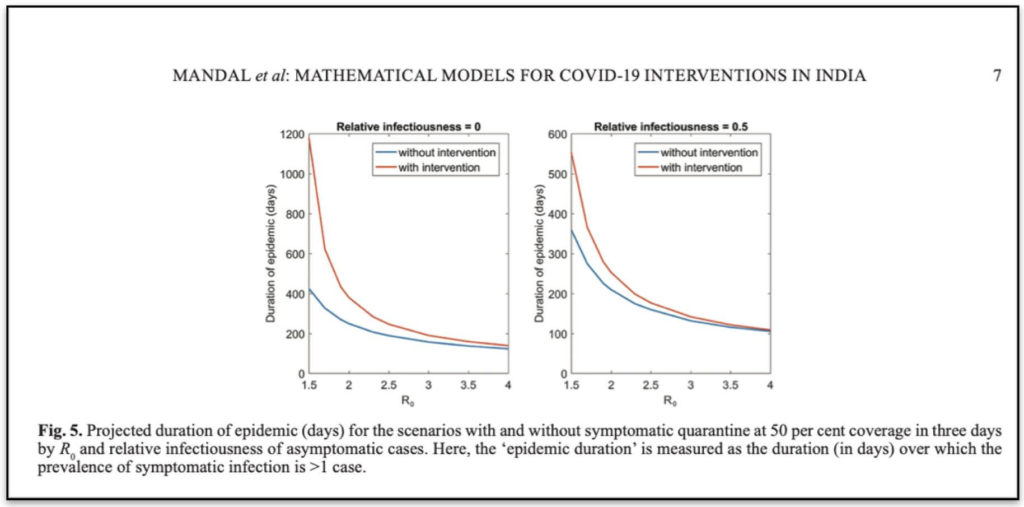
The models indicate that modest delays can be gained by identifying the symptomatic cases based on the travel history and at the port-of-entry screening etc.

Featured Image: COVID 19 research studies in India


